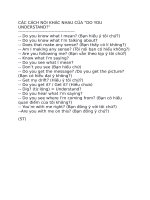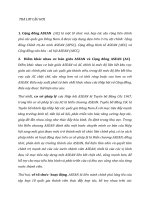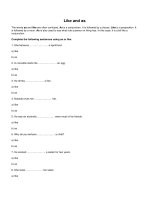Sự khác nhau giữa Wait and await
Bạn đang xem bản rút gọn của tài liệu. Xem và tải ngay bản đầy đủ của tài liệu tại đây (12.43 KB, 2 trang )
Wait and await
The verbs
wait
and
await
have similar meanings but they are used in different grammatical structures.
The verb
await
must have an expressed object.
I am
awaiting your reply.
They are
awaiting the birth
of their first baby.
The object of
await
is usually a thing. It is not a person.
For example, we
can’t
say: I am awaiting you.
The verb
wait
can be used in several different structures.
Wait
does not require an object.
We have been waiting for hours.
Wait
can be followed by an infinitive.
I
waited in line to board
the bus.
I am waiting to hear from him.
When we use the verb ‘wait’, we usually also mention the length of the time we have been waiting.
I
have been waiting
since morning.
Before an object,
wait
takes the preposition for. Note that in this case, the noun/pronoun that follows for is the
object of the preposition.
I am
waiting for you
. (NOT I am waiting you.)
We are
waiting for
his call. OR We are
awaiting his call.
Await
is more formal than wait. It can be used in formal letters and documents.
Wait is more common and leaves less room for confusion.
Note that
await
does not take the preposition ‘for’.
We are awaiting his call. (NOT We are awaiting for his call.)
Complete the following sentences using wait or await.
1. Let’s ………………. until he arrives. (wait / await)
2. The manager is busy now, so you will have to ……………… (wait / wait for / await)
3. I have been …………………. a bus for two hours. (waiting for / awaiting / waiting)
4. The bill is ………………… parliamentary approval. (awaiting / waiting)
Answers
1. wait; 2. wait; 3. waiting for; awaiting
Be first to know when grammar rules change! Sign up to our newsletter here: englishgrammar.org (It's free)
Powered by TCPDF (www.tcpdf.org)









